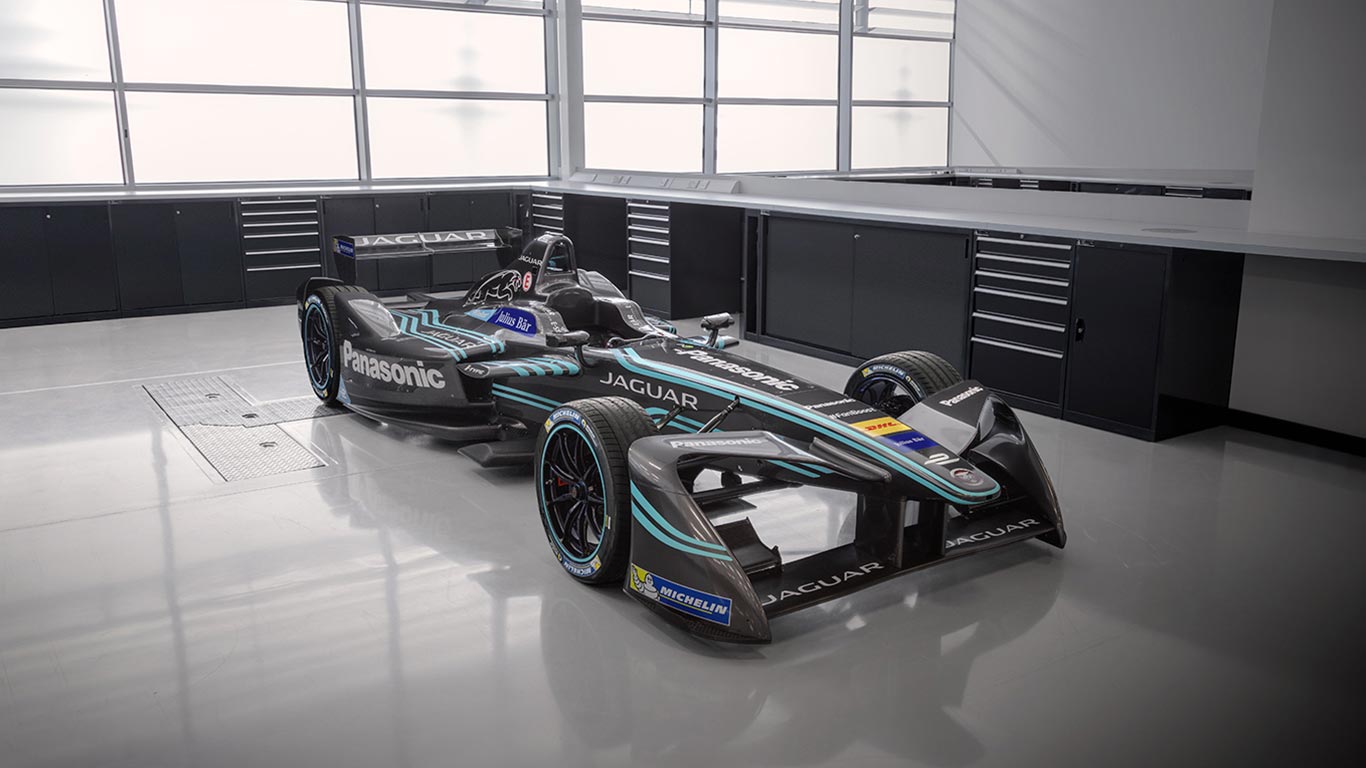The screens at the launch showed grainy 1950s archive footage of Stirling Moss in Jaguar XK120s and C-types at Dundrod, Le Mans and the Mille Miglia. Never mind another world, more like another galaxy away from Formula E, the all-electric single-seater series in which Britain’s cherished performance car manufacturer has chosen to make its long-awaited return to motor racing.
On the face of it, any link between Jaguar then and now – or modern motor sport and how it was 60 years ago – appears to be tenuous. But there was more to the decision to kick off this campaign launch with a bit of on-screen Stirling and to host it at Jaguar’s Collections Centre surrounded by classic road and racing cars than simply harking back to past glories.

Jaguar has chosen Formula E over a GT3 or Le Mans project (at first glance perhaps more predictable choices for a return, given the heritage) because it believes the series can offer the sort of parallel gains it took from endurance motor racing back in the 1950s.
Semi-monocoque chassis, slippery aerodynamics, XK engines that would power its cars for decades and perhaps most famously, disc brakes – these were the developments and areas of innovation Jaguar would carry on to the road in those early post-war years. The E-type was the glorious culmination of all those racing adventures.
Now the company is hoping racing can improve the breed once again as it chases innovation. And in 2016 ‘electrification’ is where it’s at.
News has already broken that an electric SUV will be revealed at some point next year, as Jaguar joins the race to bring sparky new products to the market. Back in the 1950s, the Big Cat was setting the trend of development – this time around it’s running to catch up, as first Tesla and the likes of Nissan and BMW have led the way.
At the team launch, the message was clear that Formula E should be considered a direct breeding ground for some of the developments in efficiency and power generation that Jaguar will need. Team chairman Gerd Mäuser said: “It’s an innovative championship, offering competitive racing in inner-city venues with new and sustainable technology. There are genuine R&D benefits for the electrification of our future road cars.”

The gun-metal grey and turquoise-striped Jaguar I-TYPE 1 glided out on to the stage, to bombastic music that hid its own lack of aural soundtrack. As Formula E heads into its third season, the cynicism of die-hard enthusiasts still lingers. But even its most strident critics must admit the FIA-backed initiative has lasted longer than many predicted. And with the addition of a ‘premium’ manufacturer such as Jaguar, plus a team title sponsor in Panasonic that has obvious global reach, Alejandro Agag and his team are surely on to something.
No wonder the Spaniard was beaming at the launch. “This is a big day for me and the Formula E team,” he said. “When we started this four years ago, with an idea on a napkin, we dreamed of days like this. For a brand with heritage to join us – this is a turning point. We’re doing something important. I’ve just returned from the Arctic – and that place is really melting…”
The team also announced its driver line-up for the series, which kicks off on October 9 with a race in Hong Kong, another new addition for 2016/17.
Northern Irishman Adam Carroll, who on ability alone really should have made it to Formula 1, gets his first manufacturer factory drive after carrying out the lion’s share of I-TYPE development. He is joined by New Zealander and current GP2 racer Mitch Evans, while Ho-Pin Tung brings his Formula E experience as reserve driver.
Testing, which continued at Donington Park this week, hasn’t passed without its problems. But overall, reliability has been good and with a hierarchy boasting experienced F1 engineers such as Williams veteran John Russell, both pace and solid team work should come with time.

Sensibly – and in stark contrast to Jaguar’s disastrous Formula 1 campaign in the first years of the century – expectations are being kept well in check. Under-promising and over-delivering is a mantra any new racing team should keep on repeat.
“We’re here to be successful, but we are under no illusions at the challenge ahead,” said team director James Barclay. “Ultimately we’re here to win, but we’re here to innovate too.”
All in the best traditions of Jaguar. Now the team must achieve both to prove it’s worthy of the badge.







